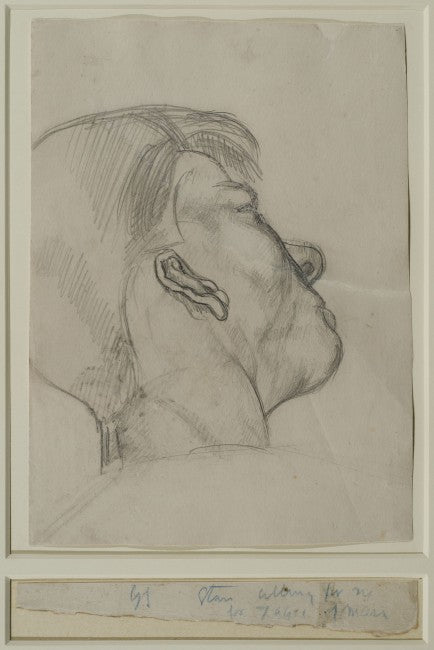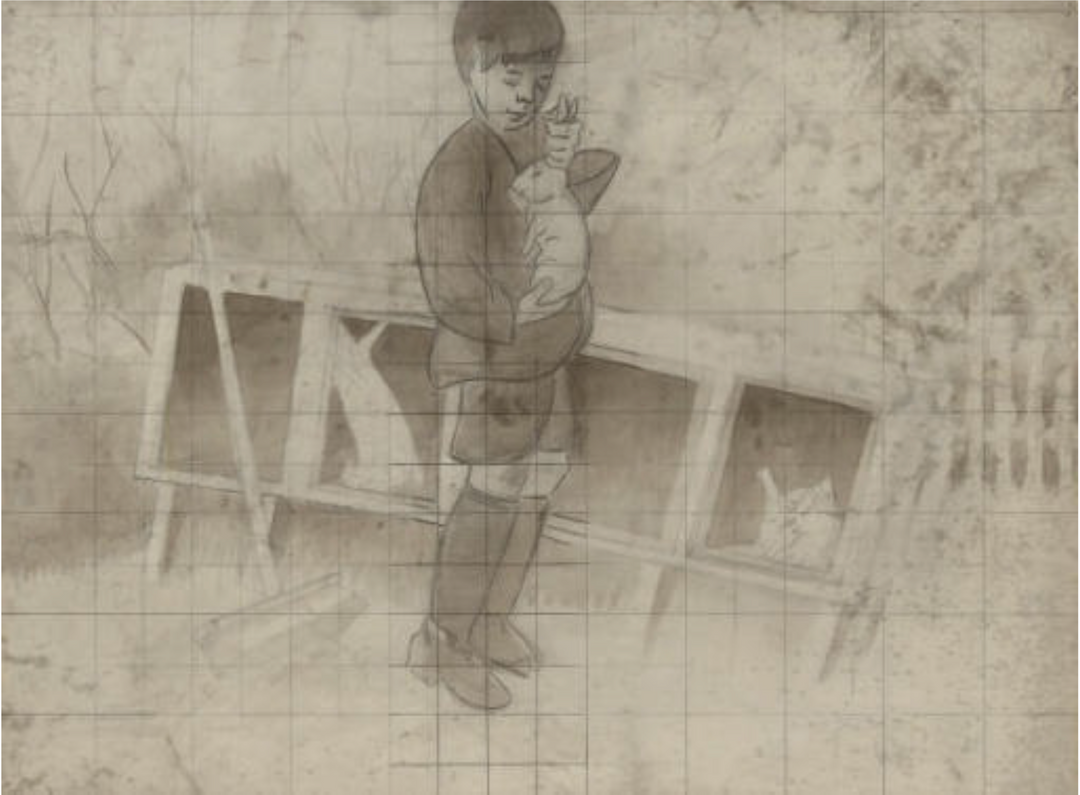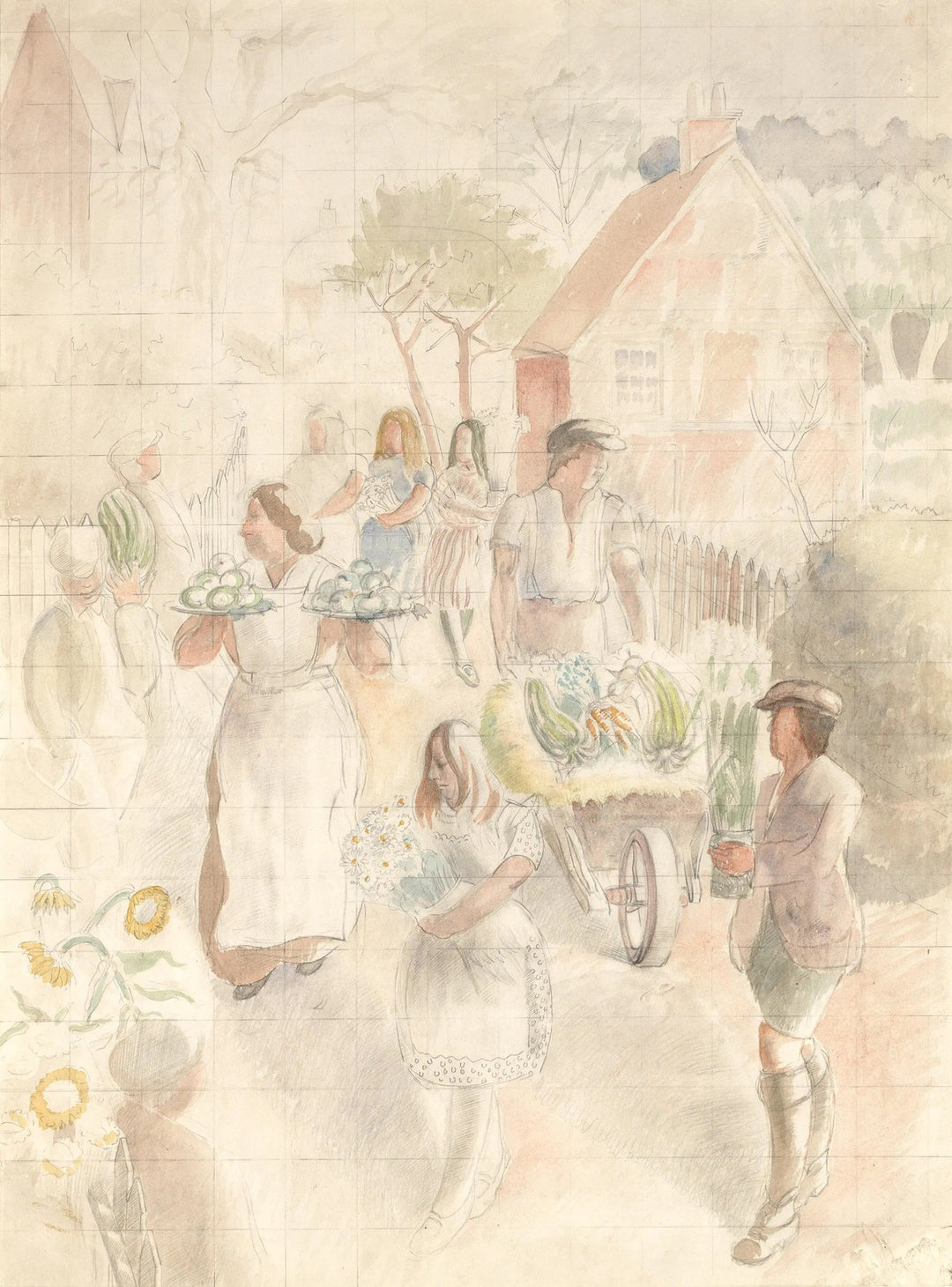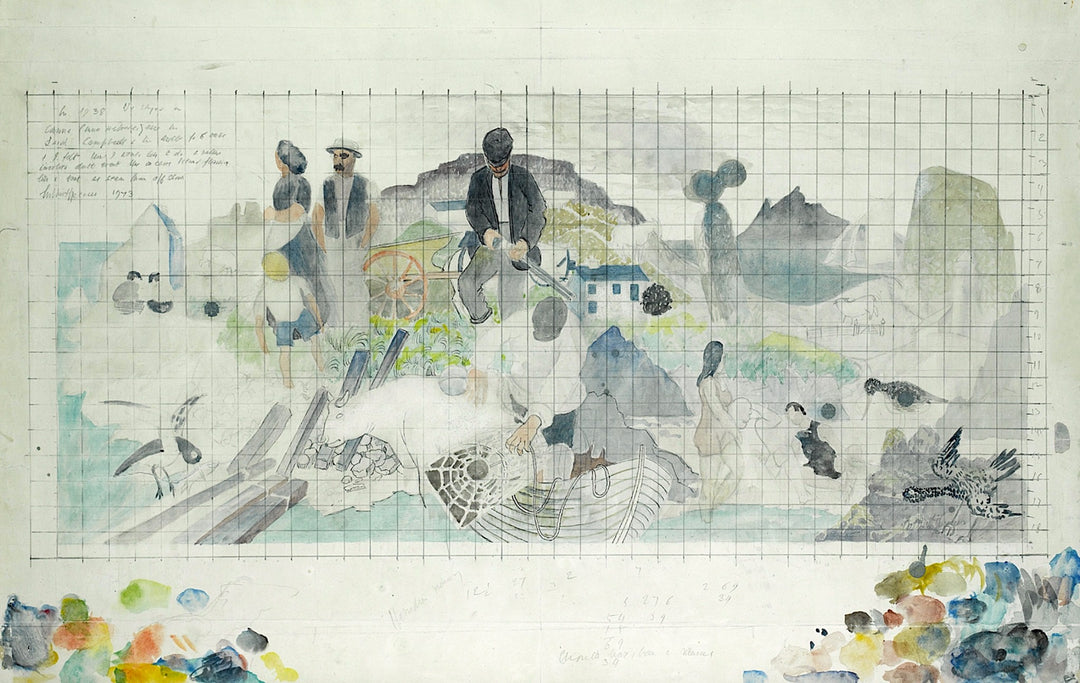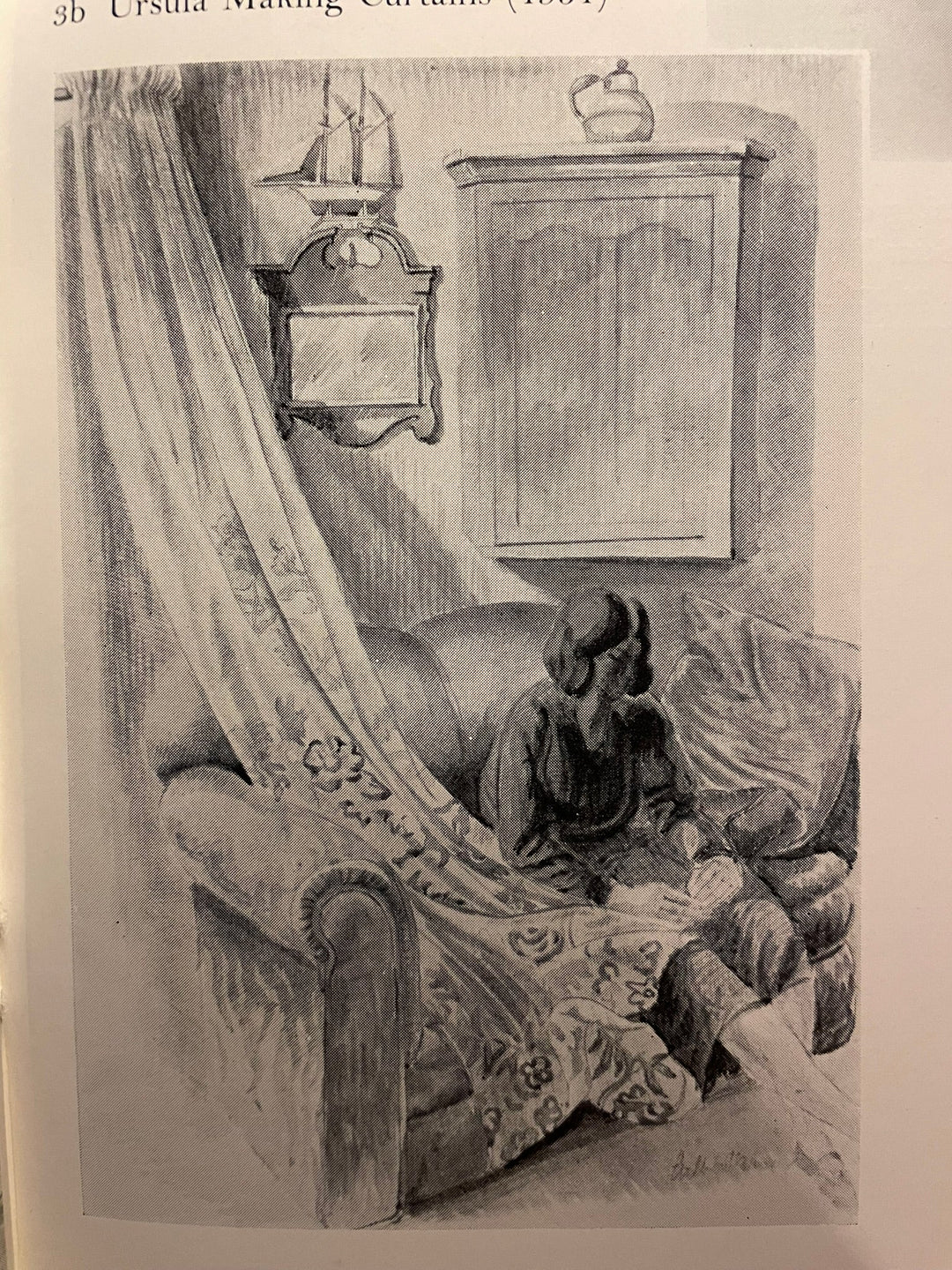Spencer’s figurative works are not easily defined. Landscapes are peopled with mysteriousfigures, history becomes allegory, memory slips into imagination. Although they draw on hisstrength in landscapes and agricultural scenes, Spencer’s figure paintings are almost always imaginative, disposed in other-worldly and enigmatic compositions. In contrast to his landscapes, which were painted directly from nature, Spencer would compose his figure paintings from a combination of memory and imagination, then square the drawings for transfer to canvas.
These paintings are also among Spencer’s largest and most ambitious works. The Seven Ages of Man (1913-4, Art Gallery of Hamilton, Ontario) was his first foray into the genre, painted for the annual Slade composition competition. The allegorical figures are placed in a scene of haymaking, against an acid-bright Cookham landscape. The painting won a ‘consolation’ prize and was purchased by Lady Ottoline Morrell for the Contemporary Art Society. Gilbert repeated the colour palette and Cookham backdrop for his competition entry the following year with Summer: Composition (1914, UCL Art Museum), this time clinching first prize.
Several of these large, multi-figure paintings utilise a vertical composition, bisected with a lane that forms an axis along which he grouped people and animals, as seen in WitchamptonFlower Show Day (1932, private collection), The School on Peggy Hill, Ambleside (1954/5, Glasgow Museums) and Summer Evening, Hook End Farm (1957, Bristol Museum & Art Gallery). Although grounded in real places and events, the figures are blank-featured and seem disconnected from each other, lending a dream-like quality to the scenes. By contrast, the broad horizontal format and monumental size of A Hebridean Memory (1949-51, private collection) was determined by its initial conceit as a mural. Spencer’s keen interest in agriculture provided the subject for an ambitious composition late in his career, The Progress of Husbandry (c. 1964, Tate).
The mysterious quality of Spencer’s multi-figure compositions carries into his simpler paintings, populated by single figures, pairs or small groups. There is a surrealism in The Rose Lover of Mortlake (c. 1950-5, private collection), and Girl at Garsington (1938) that isat odds with the earthy realism of Spencer’s unpeopled landscapes. This atmosphere evenpervades scenes of quotidian agricultural tasks, as in Shutting up the Geese (c. 1929, untraced).
In the 1920s and 1930s, Spencer painted a series of rural working men and boys that are as much studies of character type as portraits. They are identified by their occupation or geography, as in Reading Boy (1923, Reading Museum and Town Hall), Garsington Youth(1925, Victoria Art Gallery, Bath) and The Master Chairmaker (1931, ?Durban Art Gallery). The finest of these, The Rat Catcher (1922, Southampton City Art Gallery) invests the sitterwith the dignity of grand manner portraiture, and The Miller (c. 1926, private collection), painted four years later, is equally imposing in scale.
Gilbert was a keen amateur footballer, and his enthusiasm was manifested in an occasional series of sporting scenes, often with a humorous undercurrent, evident in a spirited correspondence he conducted in the early 1970s with Tottenham Hotspur Football Club. The village kickabout of Football on Cookham Moor (1930-1, Britten Pears Foundation) was followed by a dramatic FA Cup semi-final in The Goal (c. 1953-73, private collection), besides occasional forays into sports as varied as darts (Dart Throwers, c. 1930-4, untraced), hunting (Hounds at a Fox’s Hole, c. 1949, private collection), and tennis (Tennis at Ealing from the 5.37 train, c. 1965-6, untraced).







